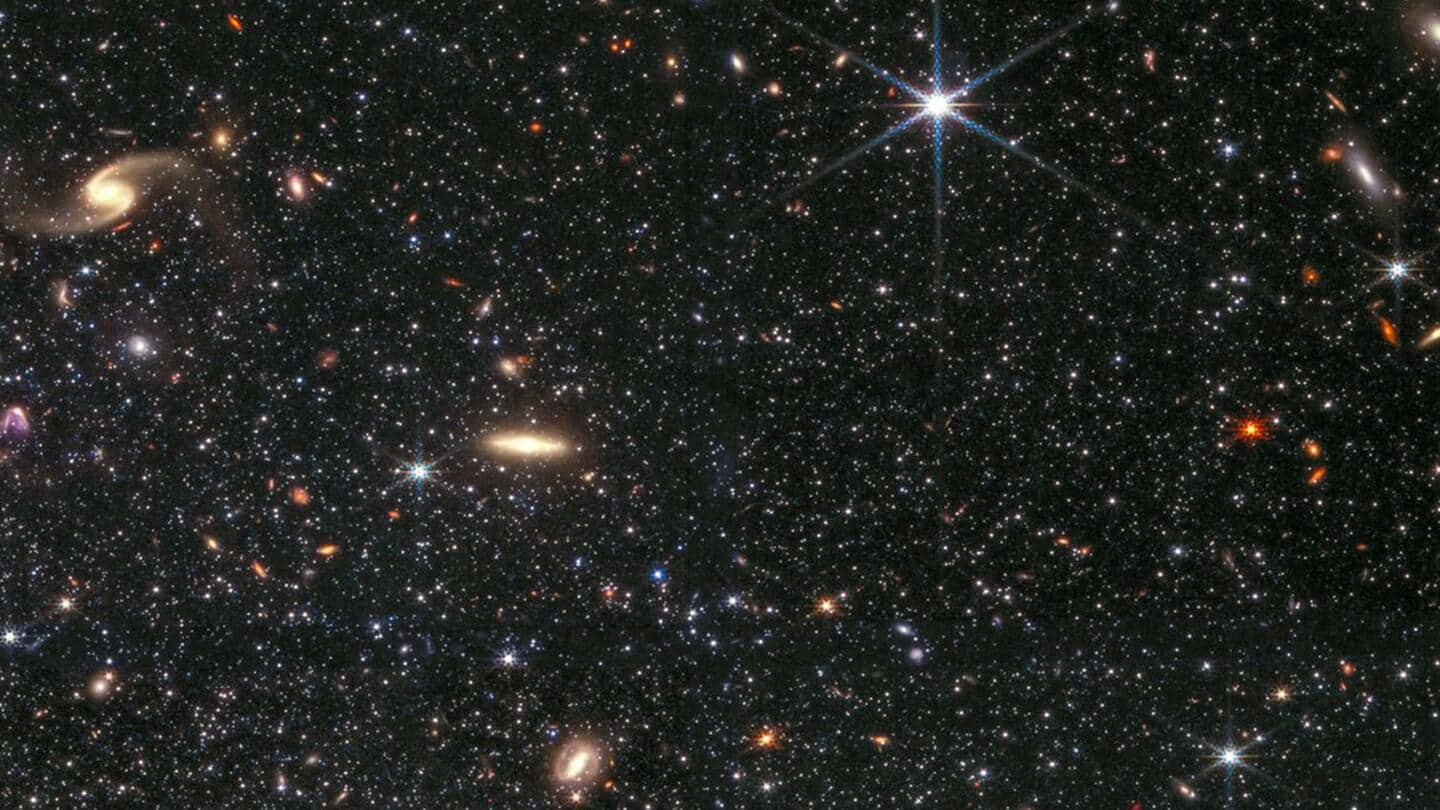
NASA's James Webb telescope captures fine details of dwarf galaxy
What's the story
James Webb Space Telescope (JWST) has captured a stunning image of a dwarf galaxy named Wolf-Lundmark-Melotte (WLM), which lies only three million light-years from Earth.
The photograph shows a legion of white stars and proves the extraordinary capabilities of Webb's near-infrared camera.
Interestingly, WLM has not interacted with surrounding galactic systems. This makes it very easy for astronomers to study the dwarf galaxy.
Context
Why does this story matter?
It appears as if JWST has taken a special liking for stars. Only recently, researchers uncovered that Webb's famous deep-field image had actually been hiding the oldest known star cluster. This time, the telescope did not have to look very far.
Although there are many nearby galaxies, they are often 'intertwined ' with our Milky Way galaxy, which makes investigations difficult.
Uniqueness
What's special about the WLM?
An important fact is that the gases found in WLM are closely similar to the gaseous composition of galaxies in the early universe, implying that they are poor in elements heavier than hydrogen and helium. This is because galactic winds often blow away such elements.
WLM is small and has low mass. Hence, events such as supernovae (star explosions) can also expel heavier elements.
Official words
JWST has captured fine details of the galaxy
"We can see a myriad of individual stars of different colors, sizes, temperatures, ages, and stages of evolution; interesting clouds of nebular gas within the galaxy; foreground stars with Webb's diffraction spikes; and background galaxies with neat features like tidal tails," said Kristen McQuinn, one of the lead scientists of the Webb Early Release Science (ERS) program.
"It's really a gorgeous image."
Twitter Post
Check out the amazing image and gif of WLM
This galaxy polishes up real nice. 💎
— NASA Webb Telescope (@NASAWebb) November 9, 2022
In this comparison of Spitzer, Hubble and Webb views, respectively, check out how Webb’s NIRCam instrument “makes the whole place shimmer” — with an assortment of stars, clouds of gas, and background galaxies. pic.twitter.com/sHrdonO7ZN
Importance
WLM can provide insights into the evolution of stars
"Low-mass stars can live for billions of years, which means that some of the stars that we see in WLM today formed in the early universe," explained McQuinn.
"By determining the properties of these low-mass stars (like their ages), we can gain insight into what was happening in the very distant past."
This makes WLM an ideal candidate for studying the evolution of stars.